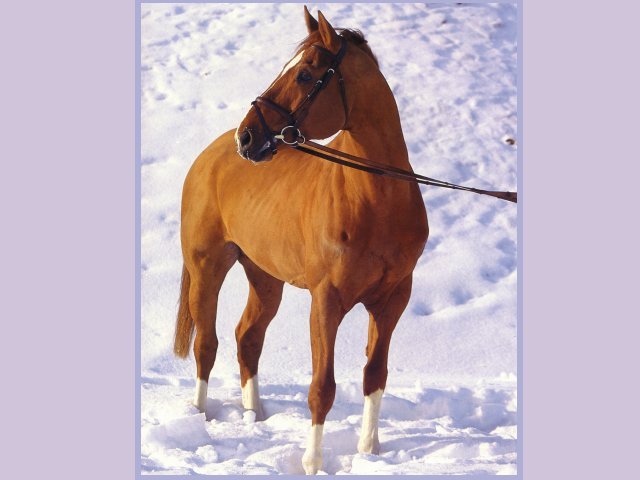| |
| |
Hanoverian

| |
| |
Hanoverian

Probably the most successful of the European warmbloods is the Hanoverian, which has a worldwide reputation as a show jumper and dressage horse. It is the result of a meticulous mix of compatible bloods supported by a strict process of selection.
The Hanoverian breed was founded in 1735 on the stud at Celle, established by George II, Elector of Hanover and King of England. The object was to create a nucleus of strong stallions that, when mated with the heavy local mares, would produce all-purpose agricultural horses.
Initially, Celle relied upon 14 black Holsteins. These were powerful coach horses, based on native mares crossed with oriental, Spanish and Neapolitan blood. Then the Thoroughbred was introduced, which at that time was more oriental in character than otherwise. The result was a lighter, better quality horse that could be used in harness and as a cavalry remount, as well as for general farm work. The Thoroughbred influence was continued, but it was carefully monitored should the Hanoverian should become too light.
By 1924 the stallion population at Celle was 500. After the Second World War, the policy was directed to the production of the riding competition horse. Trakehner - refugees from East Prussia - were used to reinforce the stallion band. Some Trakehners, as well as Thoroughbreds, remain at Celle and still exert a beneficial influence on the continuing development of the Hanoverian breed.
The selection of the Hanoverian breeding stock includes controlled performance testing and takes into account the temperament of the individual horses. Hanoverians are bred very carefully for their equable and willing temperament, and for their reliability. Much emphasis is given to these qualities. The action of the breed is impressive. It is straight, true, very energetic and has a particular elastic quality. There is little or no knee action and the stride is long.
The introduction of Thoroughbred blood has given quality to the formerly heavy and somewhat coarse head of the old-type, all-purpose agricultural Hanoverian. Modern Hanoverians have a lighter head of medium size which is clean-cut and expressive, with a large and lively eye. The neck of the Hanoverian is noticeably long and fine. It runs into large, sloping shoulders and the withers are particularly pronounced. The back is of medium length and is a strong structure with the loins being particularly powerful as benefits a jumper. The quarters are exceptionally muscular and sometimes there is a characteristic flattening at the croup. Depth through the girth and an exemplary rib formation are a feature of this breed. The structure is one of great strength but it is not one associated with speed. Powerful, symmetrical limbs with large, well-pronounced joints, short cannons and an ample measurement of bone below the knee on the forelimbs are expected. The tail is always well set on the quarters and sometimes, indeed, appears to be set noticeably high. The modern breed should have hard, well-formed hooves. The tendency to poor hooves has been largely eliminated. Every sort of solid color is found in the breed, no single color being predominant. The original Holstein foundation stallions were black. Height is approximately between 15.3 and 16.2hh.
Reference: The Ultimate Horse Book; Elwyn Hartley Edwards; 1991
The American Hanoverian Society
Hanoverian.com
Vista Ridge Farm
Garland Farms
Ashanti Farm South
Reference picture courtesy of The Ultimate Horse Site
Background photo courtesy of Ashanti Farms
